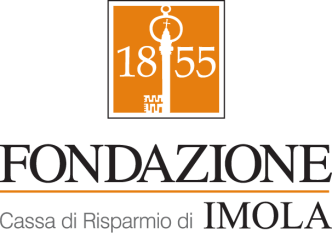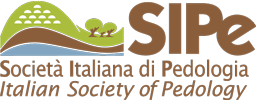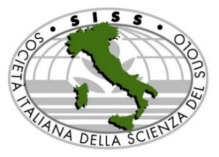Functional diversity of soil microbiomes in forest ecosystems and the spread of ESKAPE pathogens
DOI:
https://doi.org/10.6092/issn.2281-4485/21065Keywords:
soil, microbiome, ESKAPE pathogens, antibiotic resistance, forest, ecosystem, monotoringAbstract
The article presents original research results focused on the long-term investigation of the soil microbiome in forest ecosystems, particularly examining microbial community structure, the abundance of major ecological-functional groups, and the spread of ESKAPE pathogens (Enterococcus faecium, Staphylococcus aureus, Klebsiella pneumoniae, Acinetobacter baumannii, Pseudomonas aeruginosa, Enterobacter species). The study aims to analyze the impacts of both endogenous and exogenous factors on soil microbial communities and succession processes. Monitoring of soil microbiome in the forest ecosystems of the Carpathian Biosphere Reserve showed changes in microbial communities over a 12-year period. These changes included an increase in the number of spore-forming, pedotrophic and oligotrophic bacteria. Furthermore, an increased presence of ESKAPE pathogens in the soil was observed. The Antibiotic Resistance Profile (ARP) of ESKAPE pathogens in unmodified forest ecosystems was determined for the first time. Long-term studies investigating changes in soil microbial communities in natural ecosystems revealed that the soil microbiome in such environments is impacted by external factors and can act as a reservoir for pathogenic bacteria, posing risks to both human and ecosystem health.
References
ANTUNES L.C., VISCA P., TOWNER K.J. (2014) Acinetobacter baumannii: Evolution of a global patho-gen. Pathogens and Disease, 71:292–301. https://doi.org/10.1111/2049-632X.12125
ATROUNI A., JOLY-GUILLOU M.-L., HAMZE M., KEMPF M. (2016). Reservoirs of non-baumannii Acinetobacter Species. Frontiers in Microbiology,. 7:49. https://doi.org/10.3389/fmicb.2016.00049
BHADURI D., SIHI D., BHOWMIK A., VERMA B.C., MUNDA S., DARI B. (2022) A review on effective soil health bio-indicators for ecosystem restoration and sustain-nability. Frontiers in Microbiology, 13, 938481. https://doi.org/10.3389/fmicb.2022.938481
BYAPPANAHALLI M.N., NEVERS M.B., KORAJKIC A., STALEY Z.R., HARWOOD V.J. (2012) Enterococci in the environment Microbiology and Molecular Biology Reviews,. 76(4):685-706. https://doi.org/10.1128/MMBR.00023-12
CHUANG C.H., JANAPATLA R.P., WANG Y.H., CHANG H.J., HUANG Y.C., LIN T.Y., CHIU C.H. (2017) Pseudomonas aeruginosa-associated diarrheal diseases in children. The Pediatric Infectious Disease Journal,. 36(12):1119-1123. https://doi.org/10.1097/INF.0000000000001567
COX G., WRIGHT G. (2013) Intrinsic antibiotic resistance: Mechanisms, origins, challenges and solutions, International Journal of Medical Microbiology, 303(6–7): 287-292. https://doi.org/10.1016/j.ijmm.2013.02.009
DAFALE N.A., SRIVASTAVA S., PUROHIT H.J. (2020) Zoonosis: an emerging link to antibiotic resistance un-der “one health approach”. Indian journal of microbio-logy, 60: 139–152. https://doi.org 10.1007/s12088-020-00860-z
DEMYANYUK O., SYMOCHKO L., MOSTOVIAK I. (2020) Soil microbial diversity and activity in different climatic zones of Ukraine. Regulatory Mechanisms in Biosystems, 11(2). https://doi.org/10.15421/022051
DEMYANYUK O., SYMOCHKO L., HOSAM BAYOUMI HAMUDA E.A.F., SYMOCHKO V., DMITRENKO O. (2019) Сarbon pool and biological activities of soils in different ecosystems. International Journal of Ecosystems and Ecology Science, 9(1):189–200. https://doi.org/10.31407/ijees9122
FORZIERI G., DAKOS V., McDOWELL N.G., RAMDANE A., ACESCATTI A. (2022) Emerging signals of declining forest resilience under climate change. Nature, 608:534-539. https://doi.org/10.1038/s41586-022-04959-9ff. ffhal-03835571f
GOLDMAN E., GREEN L.H. (Eds.) (2015) Practical handbook of microbiology, Third Edition, 527p. https://doi.org/10.1201/b17871
GOMES L.C., BEUCHER A.M., MØLLER A.B., IVERSEN B.V., BØRGESEN C.D., ADETSU D.V., SECHU G.L., HECKRATH G.J., KOCH J., ADHIKARI K., KNADEL M., LAMANDÉ M., GREVE M.B., JENSEN N.H., GUTIERREZ S., BALSTRØM T., KOGANTI T., ROELL Y., PENG Y., GREVE M. H. (2023) Soil assessment in Denmark: Towards soil functional mapping and beyond. Frontiers in Soil Science, 3:1090145. https://doi.org/10.3389/fsoil.2023.1090145
GOMIERO T. (2016) Soil degradation, land scarcity and food security: reviewing a complex challenge. Sustainability, 8(3):281. https://do.org/10.3390/su8030281.
GRAYSTON S.J., RENNENBERG H. (2006) Assessing effects of forest management on microbial community structure in a central European beech forest. Canadian Journal of Forest Research, pp. 2595–2604 https://doi.org/10.1139/x06-154
HOFF R.T., PATEL A., SHAPIRO A. (2020) Pseudomonas aeruginosa: an uncommon cause of antibiotic-associated diarrhea in an immunocompetent ambulatory adult. Case reports in gastrointestinal medicine,. 6261748. https://doi.org/ 10.1155/2020/6261748
KHASAPANE N.G., NKHEBENYANE S.J., LEKOTA K., THEKISOE O., RAMATLA T. (2024) “One Health” Perspective on prevalence of ESKAPE pathogens in Africa: A systematic review and meta-analysis. Pathogens, 13:787. https://doi.org/10.3390/pathogens13090787
LARSSON D.G.J., FLACH C.F. (2022) Antibiotic resi-stance in the environment. Nature Reviews Microbiology, 20(5):257–269. https://doi.org/10.1038/s41579-021-00649-x
MILLER S.A., FERREIRA J.P., LEJEUNE J.T. (2022) Antimicrobial Use and Resistance in Plant Agriculture: A One Health Perspective. Agriculture (Switzerland), 12(2). https://doi.org/10.3390/agriculture12020289
NAYLOR D., McCLURE R., JANSSON J. (2022) Trends in microbial community composition and function by soil depth. Microorganisms, V. 28;10(3):540. https://doi.org/10.3390/microorganisms10030540
PATYKA V., SYMOCHKO L. (2013) Soil microbiological monitoring of natural and transformed ecosystems in the Trans-Carpathian region of Ukraine. Microbiol Journal, 75 (2):21-31. PMID: 23720960
PELEG A.Y., SEIFERT H., PATERSON D.L. (2008) Acinetobacter baumannii: Emergence of a successful patho-gen. Clinical microbiology reviews, 21:538–582. https://doi.org/10.1128/CMR.00058-07
SAVIN M., BIERBAUM G., HAMMERL J.A., HEINEMANN C.,; PARCINA M., SIB E., VOIGT A., KREYENSCHMIDT J. (2020) ESKAPE Bacteria and Extended-Spectrum-β-Lactamase-Producing Escherichia coli Isolated from Wastewater and Process Water from German Poultry Slaughterhouses. Applied and environmental microbiology,., 86:e02748-19.
SHYROBOKOV V.P. (2011) Medical Microbiology, Virology, and Immunologyю. Nova Knyha, Vinnytsa, 344p. ISBN 978-966-382-800-8
SYMOCHKO L. (2020) Soil microbiome: diversity, activity, functional and structural successions. International Journal of Ecosystems and Ecology Sciences (IJEES), 10(2). https://doi.org/10.31407/ijees10.206.
SYMOCHKO L., HOXHA E., HAMUDA H.B. (2021b) Mapping hot spots of soil microbiome using gis technology. Agriculture and Forestry, 67(1). https://doi.org/10.17707/AgricultForest.67.1.16
SYMOCHKO L., SILVA J., PINHEIRO N.C., CASTRO L., ROSEIRO L. (2023a) Reducing the spreading of human pathogenic bacteria with a biomechanical device. Lecture Notes in Bioengineering. Springer. https://doi.org/10.1007/978-3-031-47790-4_30
SYMOCHKO L., DEMYANYUK O., SYMOCHKO V., GRULOVA D., FEJER J., MARIYCHUK R. (2023b) The spreading of antibiotic-resistant bacteria in terrestrial ecosystems and the formation of soil resistome. Land, 12: 769. https://doi.org/10.3390/land12040769
SYMOCHKO L., PEREIRA P., DEMYANYUK O., COELHO PINHEIRO M.N., BARCELO D (2024a) Resistome in a changing environment: Hotspots and vectors of spreading with a focus on the Russian-Ukrainian War. Heliyon, 10(12):e3271. https://doi.org/10.1016/j.heliyon.2024.e32716
SYMOCHKO L., DEMYANYUK O., CRISAN V., DINCA L. (2024b) Microbial transformation of soil organic matter under varying agricultural management systems in Ukraine. Frontiers in Microbiology, 14. https://doi.org/10.3389/fmicb.2023.1287701
TACCONELLI E., CARRARA E., SAVOLDI A., HARBARTH S., MENDELSON M., MONNET D.L., PULCINI C., KAHLMETER G., KLUYTMANS J., CARMELI Y., ET AL. (2018) Discovery, research, and development of new antibiotics: The WHO priority list of antibiotic-resistant bacteria and tuberculosis. The Lancet Infectious Diseases, 18:318–327. https://doi.org/10.1016/S1473-3099(17)30753-3
UDDIN T.M., CHAKRABORTY A.J., KHUSRO A., ZIDAN B.R.M., MITRA S., EMRAN T. BIN, DHAMA K., RIPON M.K.H., GAJDÁCS M., SAHIBZADA M.U. K., HOSSAIN M.J., KOIRALA N. (2021) Antibiotic resistance in microbes: History, mechanisms, therapeutic strategies and future prospects. Journal of Infection and Public Health, 14(12). https://doi.org/10.1016/j.jiph.2021.10.020
VENKATESWARAN P., VASUDEVAN S., DAVID H., SHAKTIVEL A., SHANMUGAM K., NEELAKANTAN P., SOLOMON A.P. (2023). Revisiting ESKAPE Pathogens: virulence, resistance, and combating strategies focusing on quorum sensing. Frontiers in Cellular and Infection Microbiology,. 13:1159798. https://doi.org/ 10.3389/fcimb.2023.1159798
XIAO R., HUANG D., DU L., SONG B., YIN L., CHEN Y., GAO L., LI R., HUANG H., ZENG G. (2023) Antibiotic resistance in soil-plant systems: A review of the source, dissemination, influence factors, and potential exposure risks. Science of The Total Environment., 869:161855.
Downloads
Published
How to Cite
Issue
Section
License
Copyright (c) 2025 Lyudmyla Symochko, Olena Demyanyuk, M.N. Coelho Pinheiro

This work is licensed under a Creative Commons Attribution 4.0 International License.









